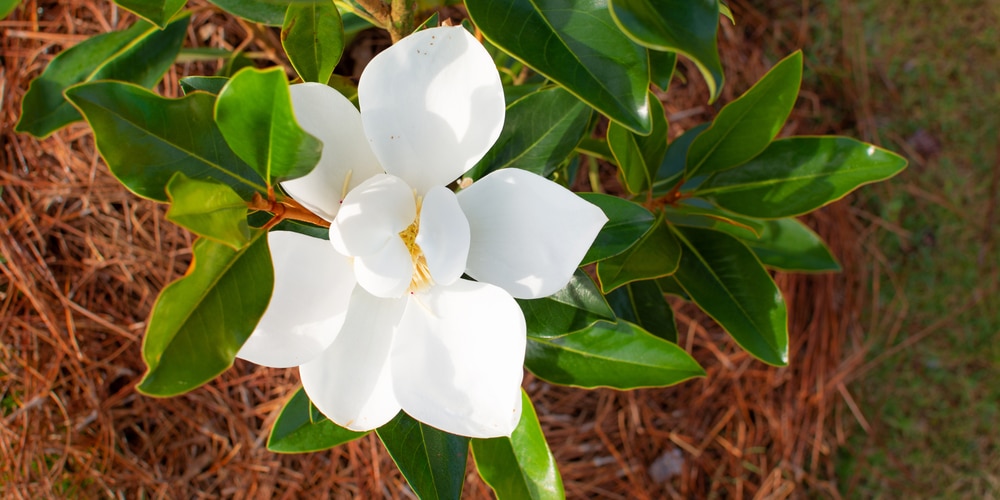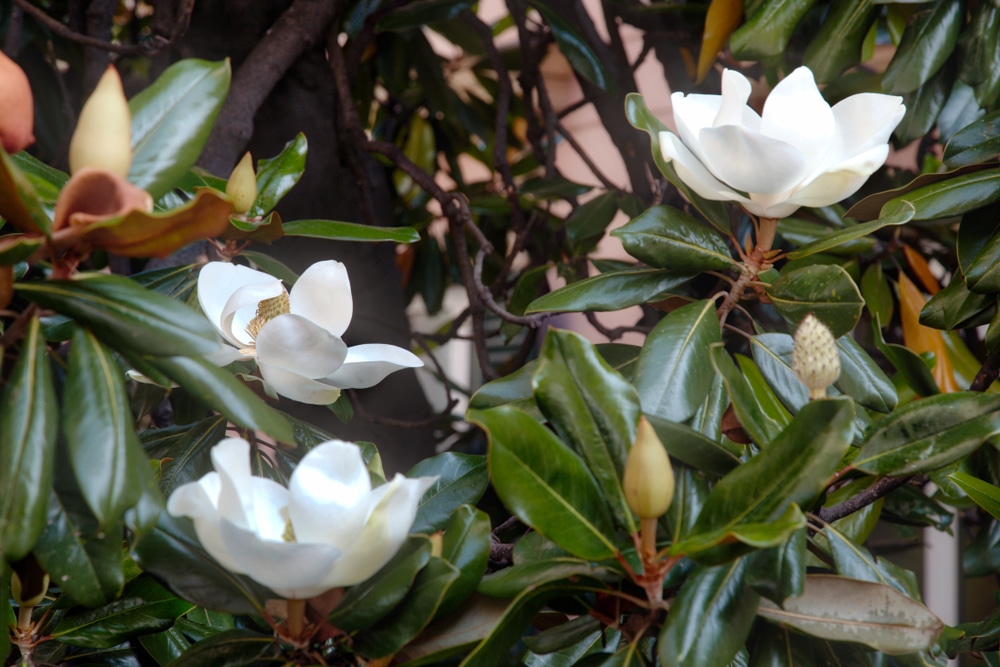The little gem magnolia is a smaller, or dwarf, variety of the Southern magnolia, or Magnolia grandiflora. The little gem magnolia usually reaches heights of 15 to 20 feet tall, and its crown can reach widths of up to ten feet once fully grown.
Sometimes they grow even bigger than this. Typically, the little gem magnolia grows 12 inches or less each year until it reaches maturity.
This little magnolia tree does best in hardiness zones six through ten. It needs at least four hours of sunlight every day but also enjoys the partial shade. The tree is quite hardy and can tolerate the following soils:
- Acidic
- Well-drained soil
- Loam
- Sandy soil and clay
When the tree reaches two to three years old, you can expect it to produce beautiful, fragrant white blooms for your yard.
Before planting one of these beautiful trees in your yard, keep the following little gem magnolia tree pros and cons in mind.
Pros
Here are some positive things to mull over if you are considering planting a little gem magnolia.
Their Appearance
The little gem magnolia is an evergreen shrub-like tree that produces upright branches, making the tree look similar to a cone. This tree grows shiny, dark green leaves with coppery brown undersides.
When spring begins to roll in, you’ll see buds beginning to form and open up, revealing three to six-inch wide white flowers. If you look closely, you’ll notice red pinecone-shaped fruits in the summer, which provide wildlife with a tasty treat.
They Are Small Trees
The Southern magnolia tree typically grows up to 80 feet tall and 60 feet wide. The little gem magnolia will only reach about a third of this size, making it much easier to fit in residential yards. With the slender shape and small crown coverage of the little gem, you can also expect slightly less foliage in your yard compared to the much larger Southern magnolia.
Long Bloom Period
You’ll continually have the opportunity to enjoy the beauty that the little gem magnolia tree has to offer, as the tree buds and blooms saucer-shaped white flowers for around six months. The tree starts blooming in the spring and continues to do so through the end of the summer.
Depending on where you live, you might even see the tree blooming through the beginning of the fall. The flowers will also fill your yard with a floral and slightly citrusy perfume scent, making you feel like you’re in a personal oasis.
Cons
Here are some negative things to keep in mind if you’re considering adding a little gem magnolia tree to your yard.
Foliage Littering
Like other magnolia tree species, little gem magnolia trees tend to drop leaves throughout the year as the old foliage dies. You’ll also find occasional dead flower petals and fruits.
Some of this dead foliage breaks down into organic matter and can feed the soil. However, sometimes the tree drops so much foliage that you need to intervene and clean it up. Otherwise, it can smother surrounding plants.
Occasional Pests and Diseases
Generally, the little gem magnolia is a relatively healthy tree. However, some pests and diseases can hurt it:
- Scale insects, which are sap-sucking small insects that look like small bumps or scales
- Wilt, caused by environmental issues or disease
- Fungal and bacterial diseases such as blight, cankers, and leaf spots
If you notice any of these things beginning to occur, cut off the branches that are being affected to prevent further spreading.
Conclusion
With proper care, a little gem magnolia tree can bring blooms to your yard for years, as most magnolia trees live for approximately 80 to 120 years! Use these little gem magnolia tree pros and cons to help decide if planting one is best for you and your yard.

